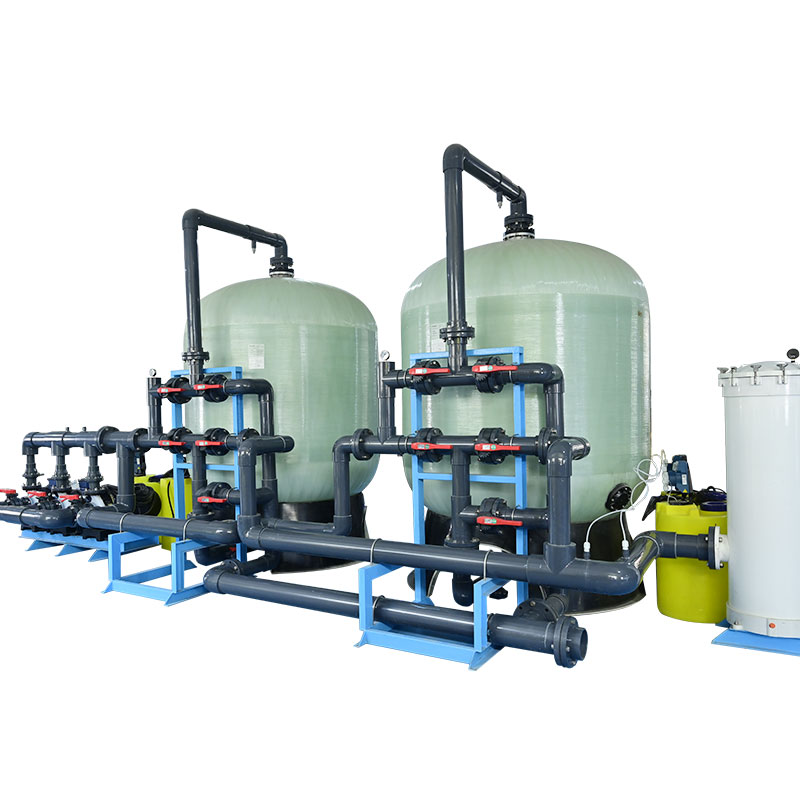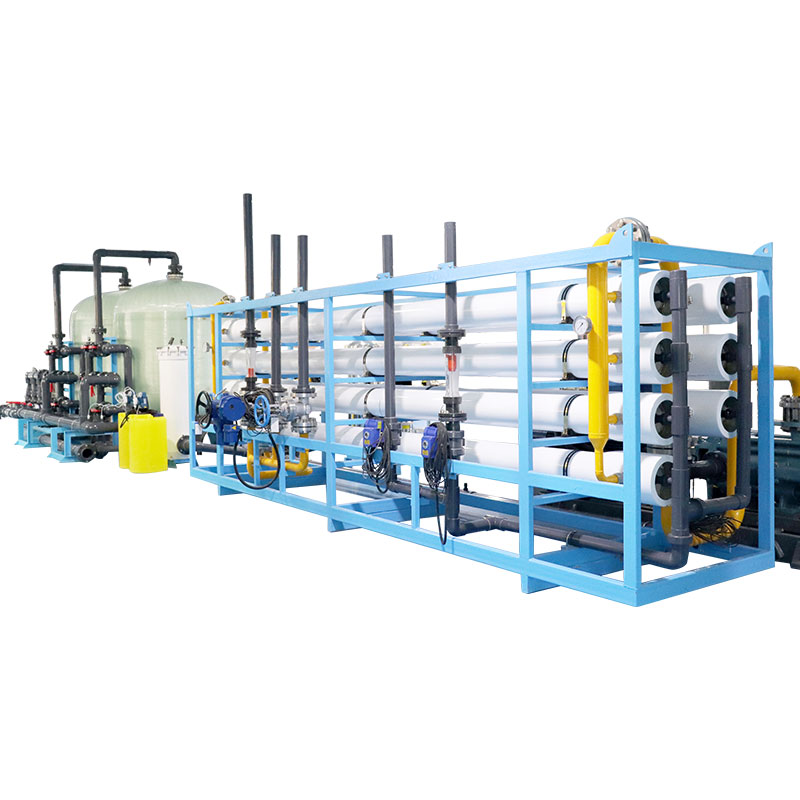What is a sea water treatment plant?
Introduction: A seawater treatment plant, also known as a desalination plant, is a facility that converts seawater into fresh water through special technology. In many arid areas or places where freshwater resources are scarce, seawater treatment plants play a vital role. This article will explore the working principles of seawater treatment plants and their wide range of uses in practical applications. It will also explore the advantages and disadvantages of seawater treatment plants and future development trends.
What is a seawater treatment plant?
A seawater treatment plant is a facility that converts seawater into fresh water through desalination technology. Its main technologies include reverse osmosis (RO), multi-stage flash evaporation (MSF) and multi-effect distillation (MED).
1. Reverse osmosis technology:
Reverse osmosis is currently the most common desalination technology. It uses high pressure to force seawater through a semi-permeable membrane, removing salt and other impurities, and ultimately obtaining pure fresh water.
The core of the reverse osmosis system is the membrane module, which is composed of thousands of tightly packed semi-permeable membranes that can effectively remove tiny particles and dissolved substances.
2. Multi-stage flash evaporation and multi-effect distillation:
Multi-stage flash evaporation and multi-effect distillation are other common desalination technologies. They convert seawater into fresh water through the processes of evaporation and condensation.
These technologies are widely used in areas with abundant thermal energy, such as coastal power plants, to use waste heat for desalination.
3. The role of seawater treatment plant:
Seawater treatment plants play an important role in areas where freshwater resources are scarce, providing a reliable source of drinking water.
These facilities can also be used for agricultural irrigation and industrial water, further reducing pressure on fresh water resources.

What are the advantages and disadvantages of seawater treatment plants?
Seawater treatment plants have many advantages in providing freshwater resources to humans, but there are also some challenges and shortcomings.
1. Advantages:
Reliable fresh water supply: Seawater treatment plants can provide reliable fresh water supply in areas with drought and scarce fresh water resources to meet the water needs of residents and industry.
Advanced technology: Technologies such as reverse osmosis, flash evaporation and distillation are constantly improving to provide efficient and environmentally friendly desalination methods.
Diversified uses: Desalinated water can be used for drinking, agricultural irrigation, industrial production and other purposes to support local economic development.
2. Disadvantages:
High energy consumption: Desalination is an energy-intensive process, especially reverse osmosis technology, which requires a large amount of electricity to maintain high voltage.
Environmental impact: The seawater treatment process may produce concentrated water and other by-products, and improper treatment may have an impact on the marine ecosystem.
High costs: Seawater treatment plants are expensive to build and operate and require long-term investment to achieve cost-effectiveness.

What technologies and equipment are needed for the construction and operation of seawater treatment plants?
The construction and operation of seawater treatment plants involves a variety of advanced technologies and equipment to ensure efficient and reliable seawater desalination. Here are some common technologies and devices:
1. Reverse osmosis membrane:
Reverse osmosis membranes are a core component of seawater treatment plants. These semipermeable membranes filter out salt and other impurities, allowing only water molecules to pass through. The quality and performance of reverse osmosis membranes directly affect the quality and yield of desalinated water.
2. High pressure pump:
A high-pressure pump is used to apply enough pressure to push seawater through the reverse osmosis membrane. These pumps must be able to provide stable high pressure to ensure proper flux of seawater across the membrane.
3. Pretreatment equipment:
Before seawater enters the reverse osmosis membrane, pretreatment is usually required to remove large particles, sediments, and other impurities. Pretreatment equipment can include screens, sand filters, sedimentation tanks, etc.
4. Monitoring and control system:
Seawater treatment plants are usually equipped with advanced monitoring and control systems to monitor water quality, monitor equipment operation, and adjust operating parameters in real time to ensure optimal desalination effects and energy utilization.
The construction and operation of seawater treatment plants require comprehensive consideration of technical, economic and environmental factors to ensure long-term stable operation and minimal impact on the environment.

How do seawater treatment plants impact local communities?
The construction and operation of seawater treatment plants has a significant impact on local communities, with both advantages and disadvantages.
First, seawater treatment plants provide local communities with a reliable source of fresh water. In areas where fresh water resources are scarce, the construction of seawater treatment plants can solve the long-standing fresh water shortage problem faced by residents and improve living standards and quality of life. Residents no longer need to rely on limited groundwater or fresh water transported over long distances, making it easier to meet the needs of daily life and industrial production.
However, the construction of seawater treatment plants may also bring some negative impacts. For example, building a seawater treatment plant requires a large amount of capital investment and land resources, which may have a certain impact on the local environment. In addition, the operation of seawater treatment plants also requires a large amount of energy consumption, which may exacerbate local energy pressure and environmental pollution problems.
Therefore, when constructing and operating seawater treatment plants, it is necessary to comprehensively consider the needs of local communities and environmental impacts, and adopt effective management and control measures to minimize negative impacts and achieve sustainable development.






